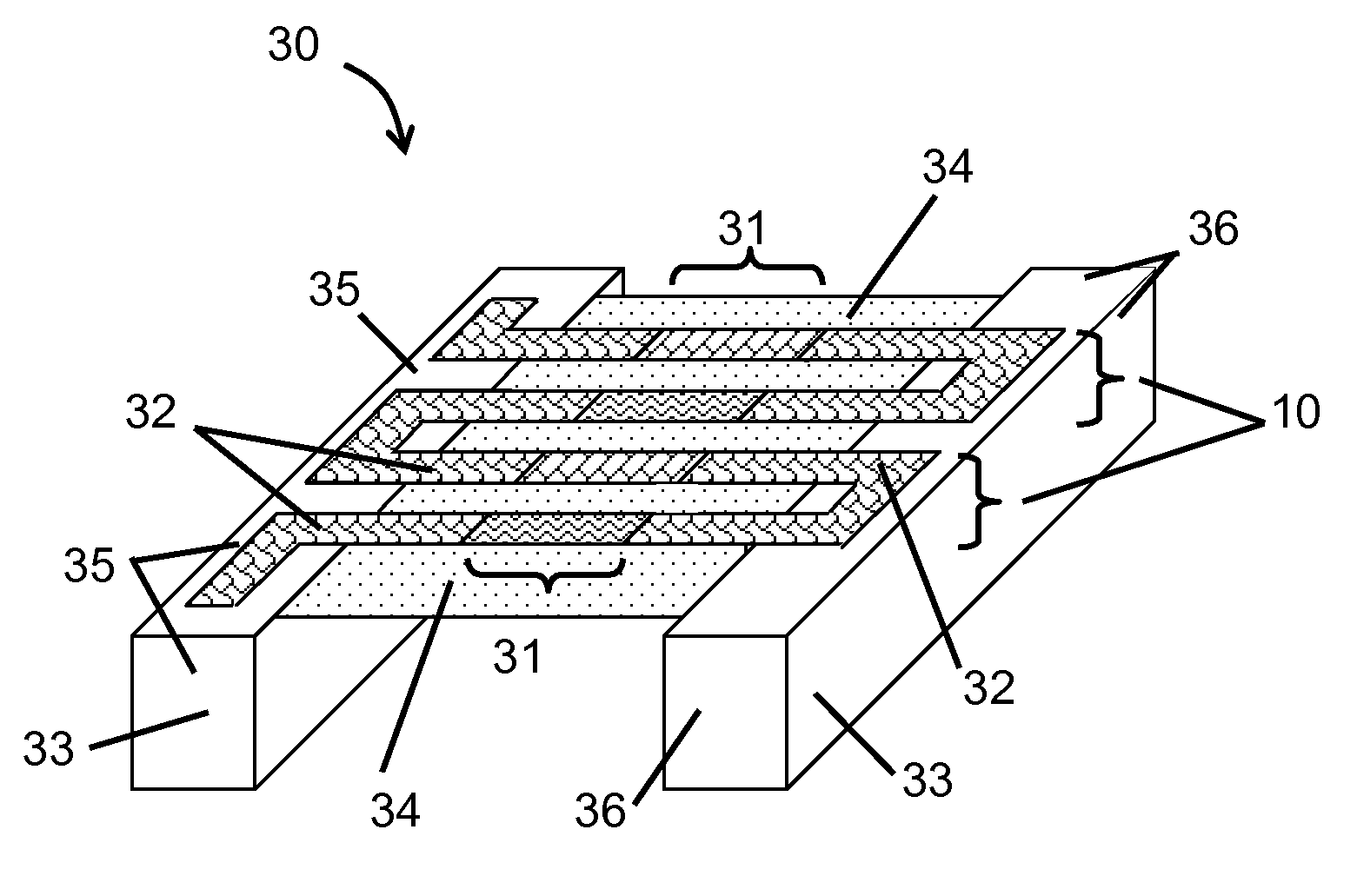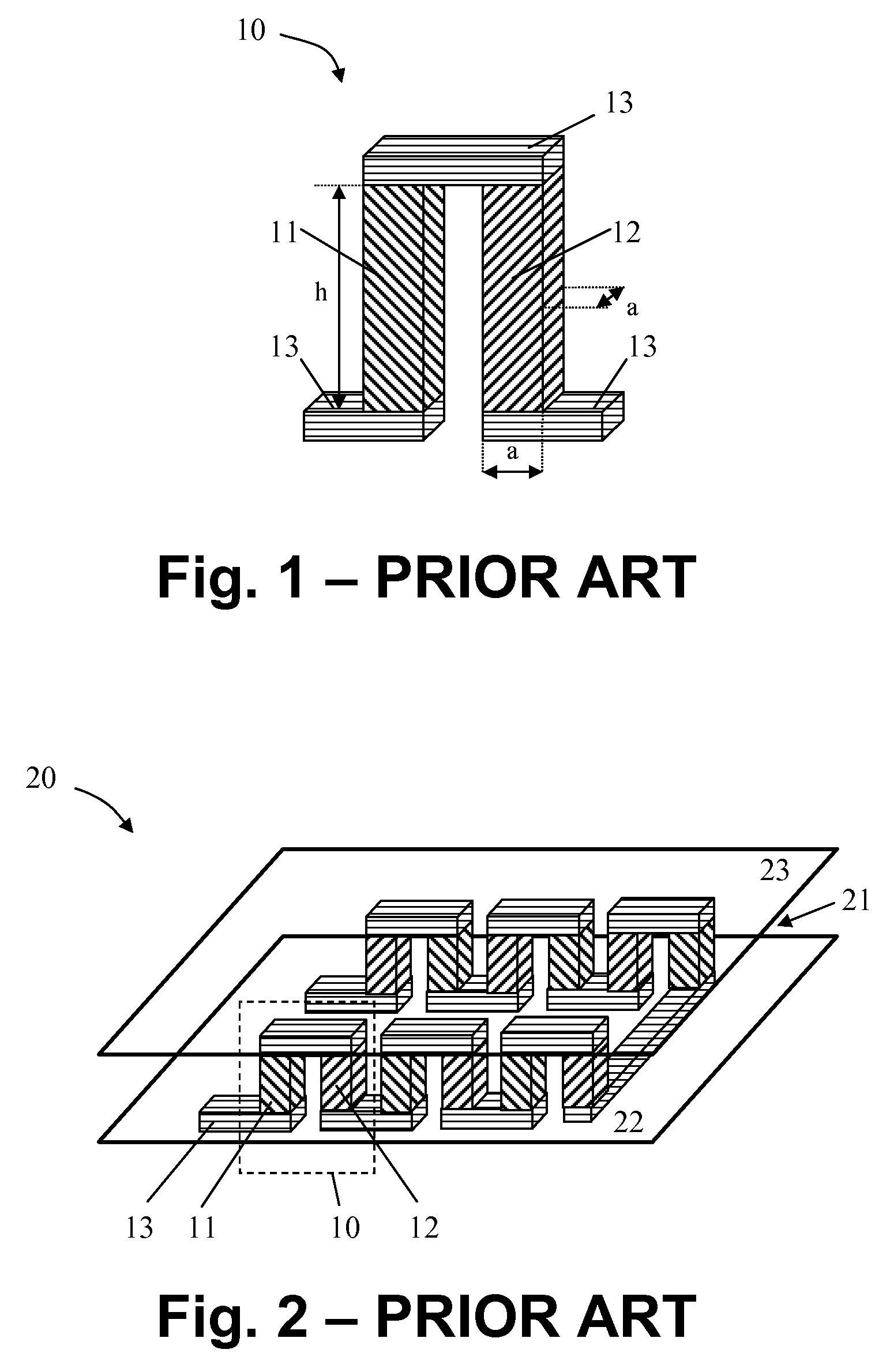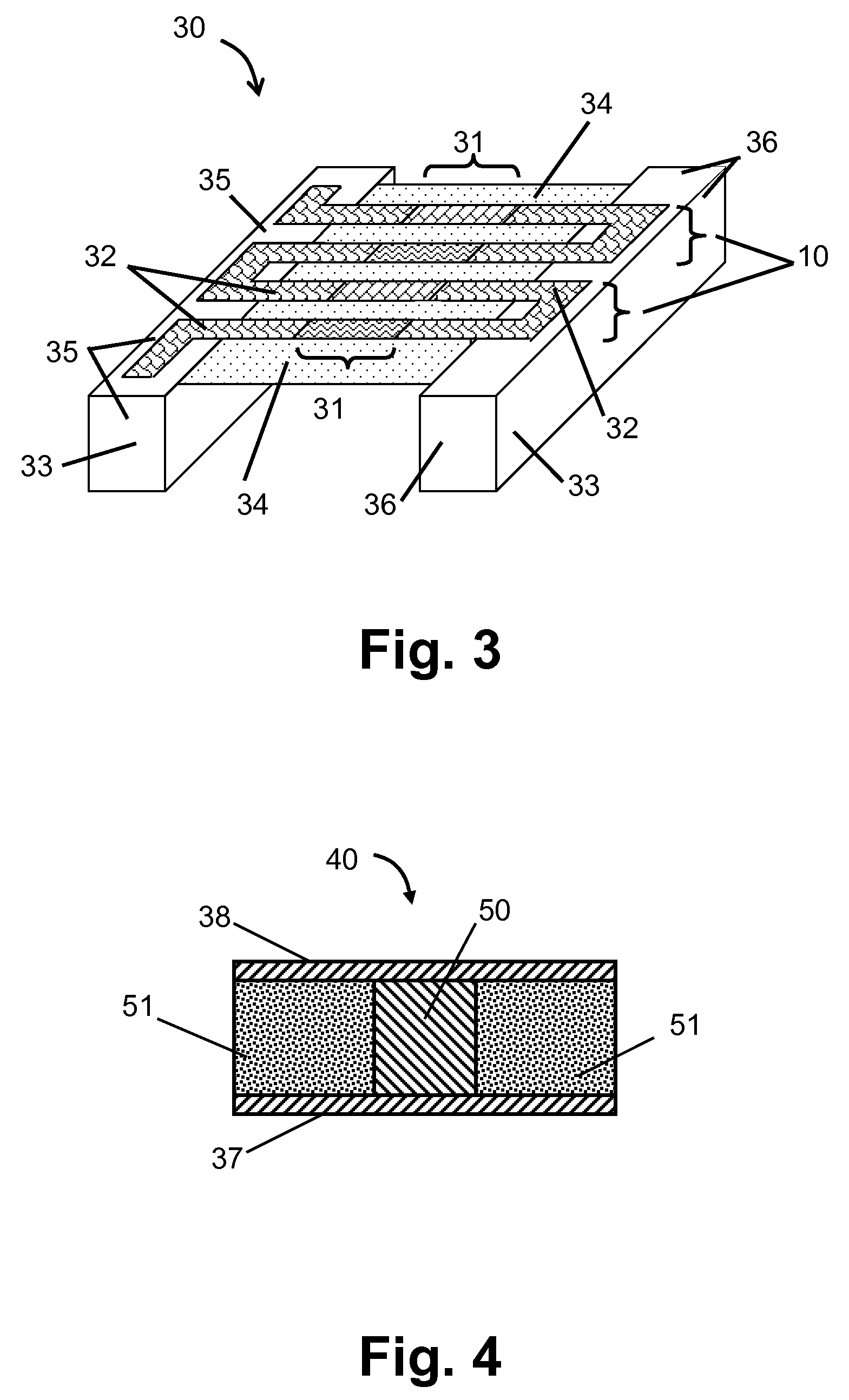Method for manufacturing a thermopile on a membrane and a membrane-less thermopile, the thermopile thus obtained and a thermoelectric generator comprising such thermopiles
- Summary
- Abstract
- Description
- Claims
- Application Information
AI Technical Summary
Benefits of technology
Problems solved by technology
Method used
Image
Examples
case 1
t thermal shunts (FIG. 13). A 3 μm thick film of BiTe is used for forming the layers of thermoelectric material. In the TEG, 14 thermopile chips are coupled into 7 couples in a way similar to the one shown in FIG. 20, face to face on a couple by couple basis. A good electrical contact resistance of 10Ω·μm2 between the interconnection metal and the thermoelectric material is assumed. The dependence of the power produced by the TEG on the length of the thermocouple legs (or on a membrane length which is the same in the case considered here) at such conditions is shown in FIG. 34.
case 2
t thermal shunts (FIG. 13). A 1 μm thin film of BiTe is considered, to obtain a 3-fold decrease of the film deposition time as compared to Case 1. In the TEG, 10 thermopile chips are coupled into 5 couples in a way similar to the one shown in FIG. 20, face to face on a couple by couple basis. As compared to Case 1, this results in a decrease of the production cost per TEG. A moderately good electrical contact resistance of 100Ω·μm2 between the interconnection metal and the thermoelectric material is assumed. The dependence of the power produced by the TEG on the length of the thermocouple legs (or on the membrane length which is the same in the case considered here) at such conditions is shown in FIG. 35.
case 3
hermal shunts (FIG. 22). In this case the length of the thermocouple legs is less than the length of the membrane. A 3 μm thick film of BiTe is used for forming the layers of thermoelectric material. The TEG comprises 14 thermopile chips and a contact resistance of 10Ω·μm2 between the interconnection metal and the thermoelectric material is assumed, as in Case 1. The dependence of the power produced by the TEG on the length of a membrane is shown in FIG. 36 for a 0.5 mm-long thermocouple leg. The dependence of the power produced by a TEG with a 3.8 mm-long membrane on the length of the thermocouple legs is shown in FIG. 37.
PUM
 Login to View More
Login to View More Abstract
Description
Claims
Application Information
 Login to View More
Login to View More - R&D
- Intellectual Property
- Life Sciences
- Materials
- Tech Scout
- Unparalleled Data Quality
- Higher Quality Content
- 60% Fewer Hallucinations
Browse by: Latest US Patents, China's latest patents, Technical Efficacy Thesaurus, Application Domain, Technology Topic, Popular Technical Reports.
© 2025 PatSnap. All rights reserved.Legal|Privacy policy|Modern Slavery Act Transparency Statement|Sitemap|About US| Contact US: help@patsnap.com



